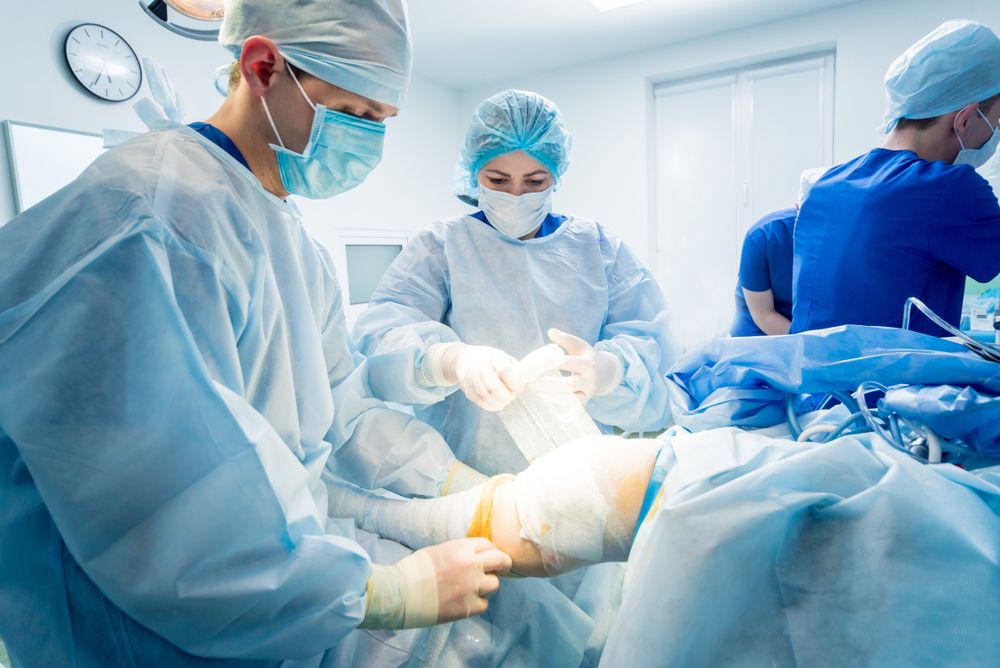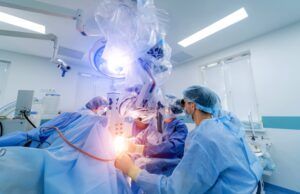Arthroscopic surgery has transformed how orthopedic conditions are diagnosed and treated. This minimally invasive technique offers numerous advantages, from faster recovery to reduced scarring. At Spine, Neck, & Back Specialists, Dr. Jay Reidler specializes in arthroscopic surgery, helping patients in Bloomfield, Englewood, and Union City, NJ, return to their active lives. We’re also pleased to announce that we now accept Cigna PPO, among other insurance options. Contact us to learn more about our services and insurance coverage.
What Is Arthroscopic Surgery?
Arthroscopic surgery is a minimally invasive procedure used to examine and treat joint problems. It involves the use of a specialized instrument called an arthroscope—a thin, flexible tube with a camera and light at the tip. The arthroscope is inserted through a small incision, allowing the surgeon to view the inside of the joint on a monitor and perform necessary repairs using miniature surgical tools.
Unlike traditional open surgery, arthroscopic procedures typically require only small incisions, reducing the risk of complications and shortening recovery times. Common joints that benefit from arthroscopy include the knee, shoulder, elbow, wrist, ankle, and hip.
When Is Arthroscopic Surgery Needed?
Arthroscopy is often recommended for diagnosing and treating various joint issues when conservative treatments have failed to provide relief. Here are some common reasons why arthroscopic surgery may be necessary:
- Torn Cartilage or Meniscus: In joints like the knee, torn cartilage or a damaged meniscus can cause pain and limit movement. Arthroscopy can remove or repair the torn tissue.
- Ligament Injuries: Ligament damage, such as a torn ACL (anterior cruciate ligament), can often be repaired arthroscopically.
- Joint Inflammation: Conditions like synovitis, which involve inflammation of the joint lining, can be treated by removing the inflamed tissue.
- Loose Bone or Cartilage Fragments: Arthroscopy can remove fragments of bone or cartilage that are causing discomfort and limiting joint function.
- Shoulder Impingement: In the shoulder, arthroscopy can be used to remove bone spurs or damaged tissue that are pinching the rotator cuff.
The Arthroscopic Surgery Process
Understanding what to expect before, during, and after arthroscopic surgery can help reduce anxiety and ensure a smoother recovery. Here’s a step-by-step breakdown of the process:
Before Surgery
Preparation for arthroscopic surgery involves a few essential steps:
- Consultation and Evaluation: Dr. Reidler will conduct a thorough assessment of your joint condition, including a review of your medical history and imaging tests such as X-rays or MRIs.
- Preoperative Instructions: You’ll receive guidance on how to prepare for surgery, including instructions on medications, fasting before the procedure, and arranging transportation.
- Home Preparation: Make sure your home is ready for post-surgery recovery. Consider arranging furniture for easy access and creating a comfortable rest area.
During Surgery
Arthroscopic surgery is usually performed on an outpatient basis, meaning you can go home the same day. Here’s what to expect:
- Anesthesia: Depending on the joint and the procedure, anesthesia options may include local (numbing the area), regional (numbing a larger area), or general (you’ll be asleep) anesthesia.
- Procedure: Dr. Reidler will make a small incision near the affected joint and insert the arthroscope. Additional small incisions may be made for other surgical tools. The joint is then examined, and necessary repairs are carried out, such as trimming damaged cartilage or stitching torn ligaments.
- Completion: Once the procedure is complete, the incisions are closed with sutures or small adhesive strips, and the joint is bandaged.
The entire procedure typically takes between 30 minutes to two hours, depending on the complexity of the surgery.
Recovery After Arthroscopic Surgery
One of the main benefits of arthroscopic surgery is the shorter and less intensive recovery period compared to traditional surgery. Here’s what to expect during recovery:
Immediate Post-Surgery
- Rest and Ice: You’ll be encouraged to rest the joint and apply ice to reduce swelling and discomfort. Pain medication may be prescribed to manage any initial soreness.
- Mobility Aids: Depending on the joint, you may need to use crutches, a sling, or a brace to support the healing process. Your mobility aids will be tailored to your specific surgery.
Physical Therapy
Physical therapy is crucial to a successful recovery. It begins shortly after surgery and is designed to:
- Restore Mobility: Gentle exercises help regain movement in the affected joint.
- Strengthen Muscles: Targeted strengthening exercises improve muscle support around the joint.
- Enhance Flexibility: Stretching exercises are introduced to enhance joint flexibility and prevent stiffness.
Follow-Up Care
Follow-up appointments with Dr. Reidler are essential to monitor your progress. These visits will include:
- Assessing Joint Function: Dr. Reidler will evaluate your joint’s mobility, strength, and range of motion.
- Adjusting the Recovery Plan: Your physical therapy exercises and activity levels may be adjusted based on your recovery progress.
- Discussing Activity Restrictions: Specific activities may be restricted during recovery to ensure the joint heals properly. Be sure to follow Dr. Reidler’s guidance on when you can safely resume normal activities.
Benefits of Arthroscopic Surgery
Arthroscopic surgery offers several advantages over traditional open surgery, making it a preferred choice for many patients:
- Minimally Invasive: Smaller incisions mean less tissue damage, less scarring, and reduced risk of infection.
- Shorter Recovery Time: Most patients recover faster compared to open surgery, allowing for a quicker return to daily activities.
- Accurate Diagnosis: The detailed view provided by the arthroscope allows for precise diagnosis and targeted treatment.
- Outpatient Procedure: Many arthroscopic surgeries are done on an outpatient basis, avoiding lengthy hospital stays.
Potential Risks and Considerations
While arthroscopic surgery is generally safe, it’s important to be aware of potential risks and considerations:
- Infection: Though rare, there is a small risk of infection at the incision sites.
- Blood Clots: In some cases, blood clots can form post-surgery. Your healthcare provider may recommend preventive measures like compression stockings.
- Nerve or Blood Vessel Damage: There’s a slight risk of injury to surrounding nerves or blood vessels during the procedure.
- Stiffness: Some patients may experience stiffness or restricted movement post-surgery, which can often be managed through physical therapy.
It’s essential to discuss any concerns with Dr. Reidler before the surgery. Open communication helps set realistic expectations and ensures the best possible outcome.
Moving Forward with Confidence
Arthroscopic surgery has revolutionized joint care, offering patients a path to relief without the lengthy recovery associated with traditional surgery. At Spine, Neck, & Back Specialists, Dr. Jay Reidler is dedicated to delivering personalized care for each patient. Whether you’re in Bloomfield, Englewood, or Union City, NJ, our goal is to help you regain mobility and live a pain-free life. With our acceptance of Cigna PPO and a range of other insurance plans, we make high-quality care accessible. Contact us today to schedule a consultation and discuss your options for arthroscopic surgery.
Sources
- Jackson, R. W., & Dieterichs, C. (2003). The History of Arthroscopy. Arthroscopy: The Journal of Arthroscopic and Related Surgery.
- McCarty, E. C., & Cole, B. J. (2005). The Role of Arthroscopy in Treating Joint Injuries. American Journal of Sports Medicine.
- Haines, J. F., & Spalding, T. J. (2010). Advances in Arthroscopic Surgery: A Review. Journal of Bone and Joint Surgery.




